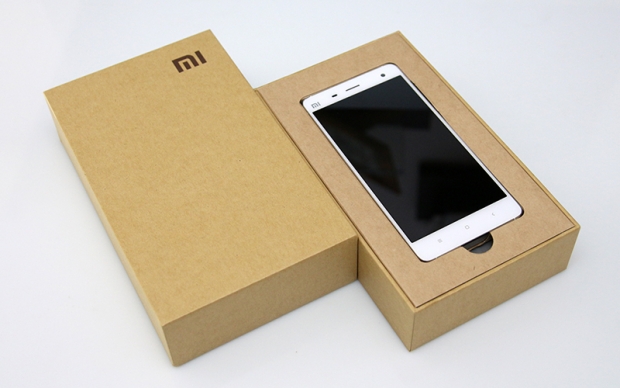Index
Review: Drop 4G support, drop the price, sell, sell, sell
Xiaomi sometimes has a weird way of doing things, and the Mi4 Overseas Edition is just one example of this. The company is selling a crippled version of their Mi4 flagship for peanuts, sans 4G connectivity.
So what’s going on here? Well, a lot of people in a lot of regions simply don’t need 4G yet, so Xiaomi thought it would be a good idea to start selling a 3G version of their hit phone. The upside is that the Overseas Edition costs just $227, or about $10 less than the excellent mid-range Xiaomi Mi4c, which we reviewed a couple of months ago.

What’s the catch? For starters, the phone does not support 4G networks, obviously, and it’s only available in white, with 16GB of storage. For many users, lack of 4G and limited storage will be a deal-breaker. However, for anyone that doesn’t need 4G and loads of storage, the Mi4 Overseas Edition looks like a great deal.
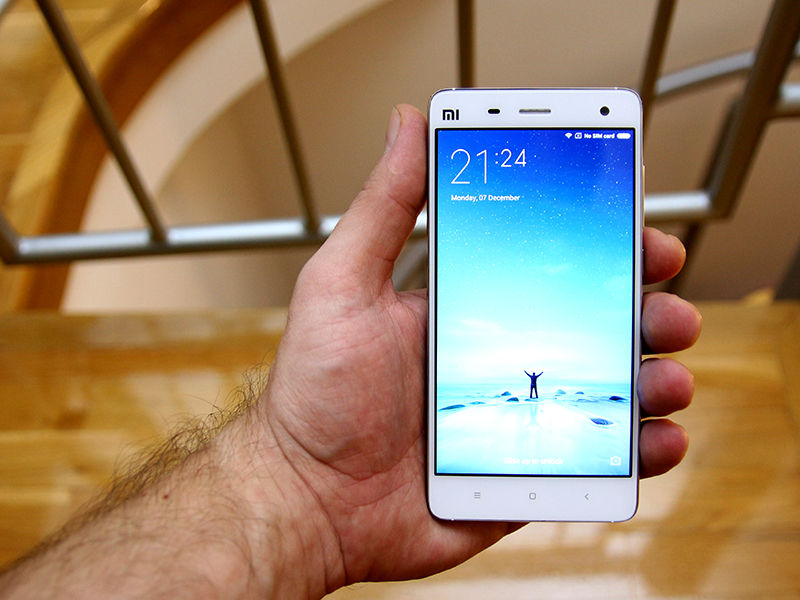
There might be another reason for Xiaomi's decision to market a cheaper Mi4. The phone has been around for a while, and its successor is not in sight yet. It appears that Xiaomi decided to "skip" the Snapdragon 810 processor and wait for something better for its flagship, causing a slight delay.
Anyway, this is a flagship phone at mid-range pricing. You still get a Snapdragon 801 with 3GB of RAM, not to mention excellent build quality and good looks. So what is it really like?
Design and Build Quality
Long story short, it’s just like any other Mi4, just without 4G. The design is identical and so is the rest of the spec.
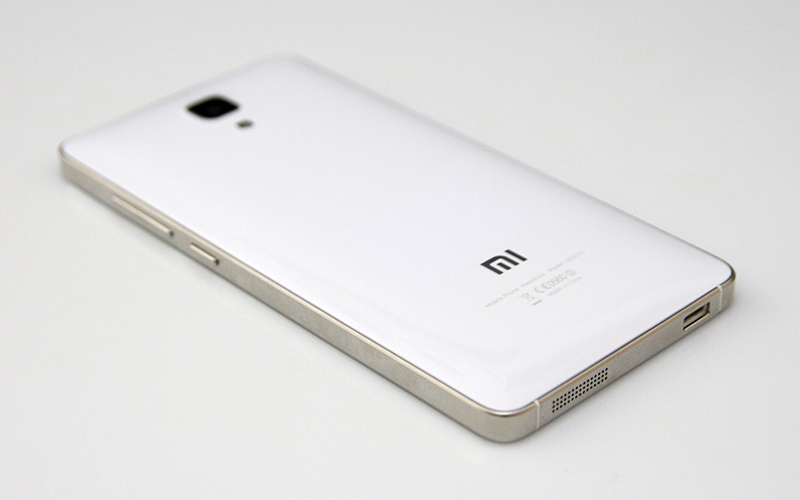
The Mi4 is built around a metal frame, with Corning glass at the front and a replaceable, scratch-proof back cover. It measures 139.2 x 68.5 x 8.9mm, but the curved sides make it look a bit thinner. It’s not a thin phone, but it sports a 3080mAh battery (non-removable) and some pretty good camera optics. At least we know the extra millimetres didn’t go to waste.
We’ve come to expect exquisite build quality from Xiaomi, and the Mi4 Overseas Edition does not disappoint. It looks and feels like a proper Mi4 flagship, nothing has changed on the outside. Build quality is second to none.

The finish on the metal frame is smooth and impeccable. The back can be removed using a suction cup, and you can replace it with any of a number of different designs, ranging from scratch-proof plastic to bamboo. It does not feel like a removable back cover.
The overall design is subtle and nothing really stands out. Xiaomi did not want to experiment with its flagship, and the Mi4 has been around for a while (the Mi5 should launch in a couple of months or so).

The layout is more or less standard. The micro USB port and side-firing mono speaker are at the bottom.

The 3.5mm audio jack is on top.

The volume rocker and power button are located on the right.

The SIM tray is on the left. It can accommodate a single micro SIM card, there’s no microSD storage.

There’s not a lot of action on the subtly textured back. The 13-megapixel camera with single LED flash is located at the top centre, while the carved Mi logo sits in the lower half of the cover.
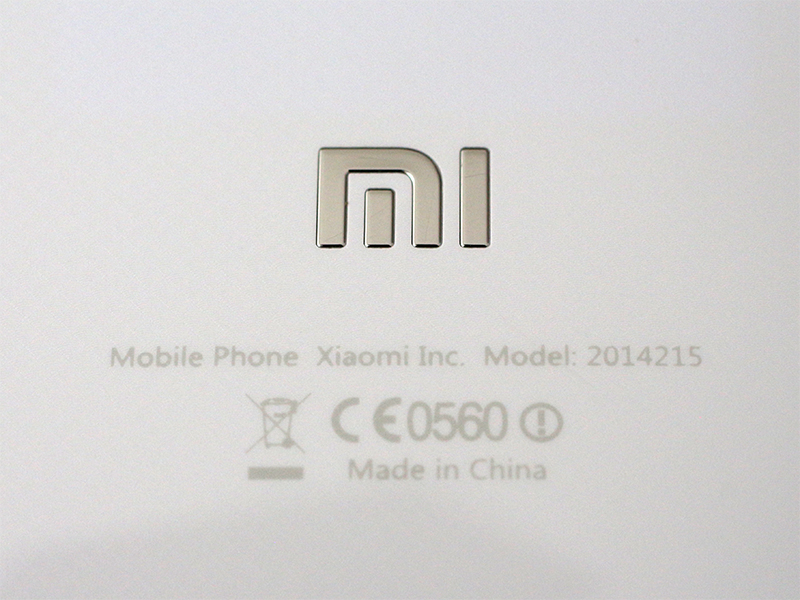
At the end of the day, it looks and feels like a flagship device through and through. Considering the low price, there’s no room for complaints.
Specs and Performance
The Mi4 is based on last year’s hardware. However, the Snapdragon 801 isn’t a slow processor by any measure. It’s still used in millions of phones, and even some recently launched devices like the Lenovo ZUK Z1 and OnePlus X are based on the same 32-bit processor.
The Qualcomm chip is backed by a generous 3GB of RAM, and a nice all-round spec in general.
Xiaomi Mi4 Overseas Edition specs:
- SoC: Qualcomm Snapdragon 801 (MSM8794AC), 28nm
- CPU: Four Krait 400 cores up to 2.5GHz
- GPU: Qualcomm Adreno 330 up to 578MHz
- RAM: 3GB LPDDR3 933MHz
- Storage: 16GB eMMC 5.0 internal storage (single partition), non-expandable
- Display: 5-inch 1080p JDI IPS panel
- OS: MIUI 7 based on Android 4.4.4
- Rear camera: 13-megapixel Sony IMX214 sensor, f/1.8 aperture
- Front facing camera: 8-megapixel Sony IMX2019PQ sensor, f/1.8 aperture
- Battery: 3080Ah lithium polymer, non-removable
- Dimensions: 139.2 x 68.5 x 8.9mm
- Weight: 149g
- WiFi and Bluetooth: 802.11b/g/n WiFi and Bluetooth 4.0
- Sensors: ambient light, direction, gravity, accelerometer, compass, temperature, pressure, proximity, gyroscope, rotation, GPS, A-GPS. GLONASS, BeiDou
- SIM card: single SIM (micro SIM)
- Network support:
2G: GSM 850/900/1800/1900MHz
3G: WCDMA 850/900/1900/2100MHz
4G: n/a
Not a lot to say about the spec, other than to point out a few details that set the Mi4 Overseas Edition apart from similarly priced phones. The basic hardware package is good (Snapdragon 801, 3GB RAM, eMMC 5.0 storage), but there’s only one storage option (16GB) and there is no microSD slot.
Both cameras pack good optics with a speedy f/1.8 aperture on top of Sony sensors. Speaking of sensors, the Mi4 has a comprehensive sensor suite, including BOSCH temperature and pressure sensors, rotation and linear acceleration sensors and so on. The most obvious shortcoming is lack of 4G connectivity, but that’s sort of the point. This is a phone designed for markets without 4G coverage, or people who simply don’t want to spend a lot of money on good data plans and are content with 3G speeds.
Another surprise is the fact that the Mi4 hasn’t moved to Android 5.x yet. MIUI 7 is usually based on the Android 5.x, but on the 32-bit Mi4 it’s still on KitKat. This isn’t a big deal because the end-user won’t be able to tell the difference. Rumour has it that Xiaomi is skipping Android 5.x on the Mi4 and moving straight to Android 6.0 in a few months.
So, let’s take a look at some performance figures:
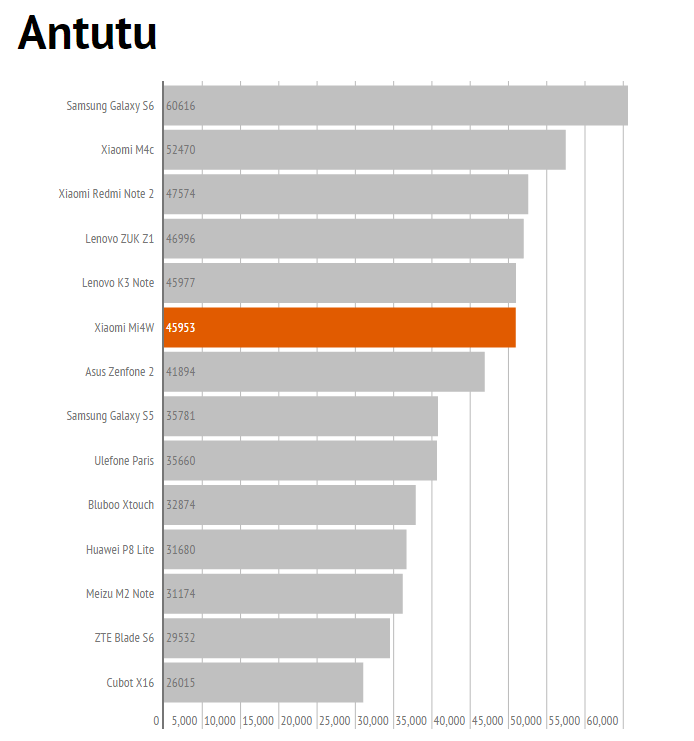
In Antutu, the Snapdragon 801 ends up behind some octa-core A53 chips, but in real life, the situation is somewhat different, as the rest of the benchmarks will prove.
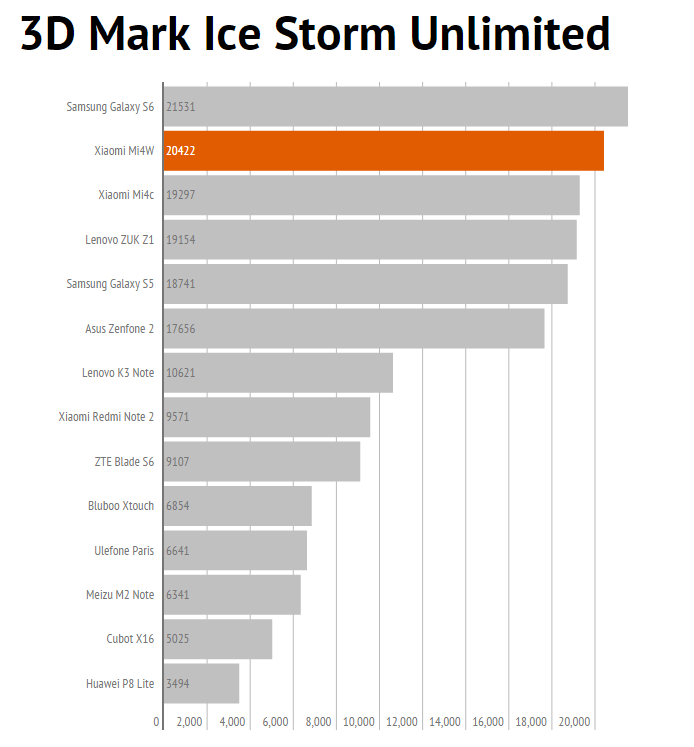
The huge Adreno 330 GPU wipes the floor with budget octa-cores, and it even manages to outpace the Adreno 418, used in the 64-bit Snapdragon 808. This is an excellent result, especially when you consider the age of the Snapdragon 801.
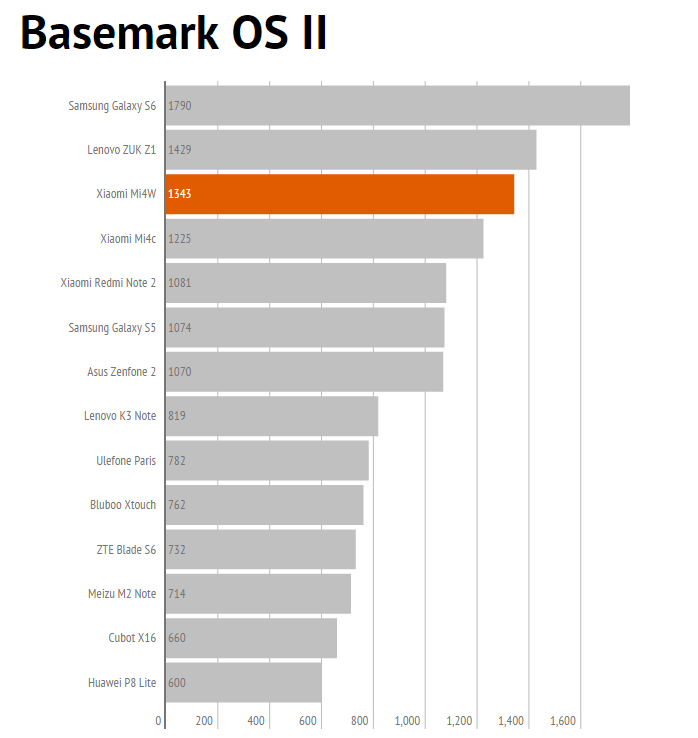
Basemark likes a lot of memory and fast storage, so the Mi4 manages to trump the Mi4c, which has less RAM and a marginally faster processor. However, the Mi4 ends up slower than the Lenovo ZUK Z1, with the same processor and 64GB of eMMC 5.0 storage.
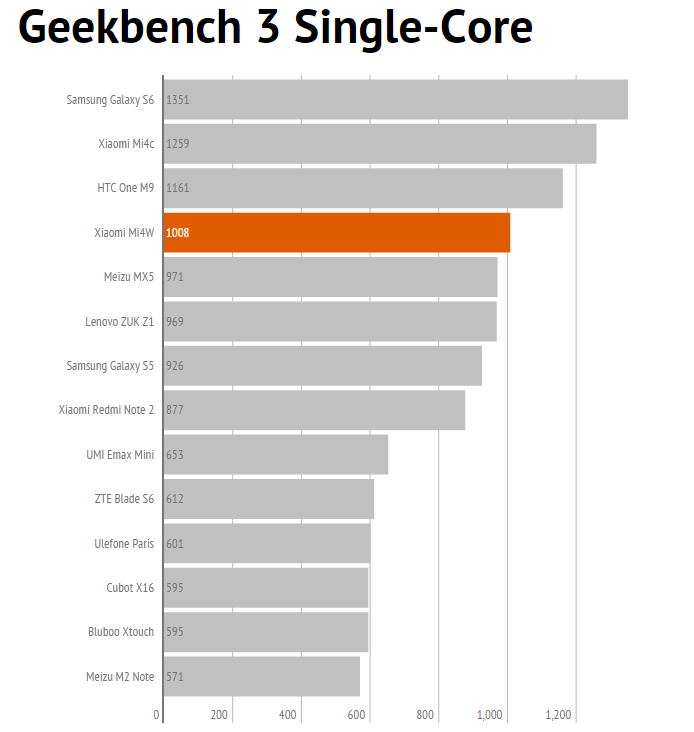
The Geekbench single-core test is a good indicator of single-thread performance. It shows the Krait 400 core is significantly faster than Cortex-A53 cores, but the lead is not that big. The Snapdragon 801 still ends up about 25% slower than the Snapdragon 808, which packs two Cortex-A57 cores.
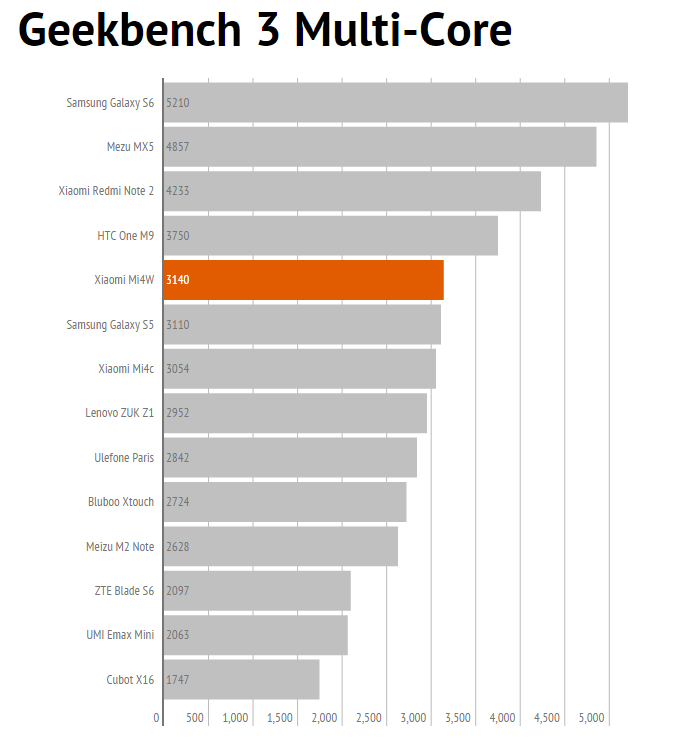
In the multi-core test, the Snapdragon 801 ends up quite a bit slower than MediaTek's mid-range Helio X10 (Redmi Note 2, Meizu MX5).
In any case, overall performance is quite good, despite the fact that the Snapdragon 801 is a relatively old 32-bit processor. It still has a lot of CPU muscle and its GPU is powerful enough to deal with any Android game.
Camera, Display and Audio Quality
The Mi4 uses a JDI 5-inch 1080p IPS display and it’s excellent. Xiaomi claim it’s a high-saturation display capable of covering 84% of the NTSC colour gamut. It’s well calibrated and we have no complaints about quality. Viewing angles are good, as is outdoor brightness and colour reproduction.
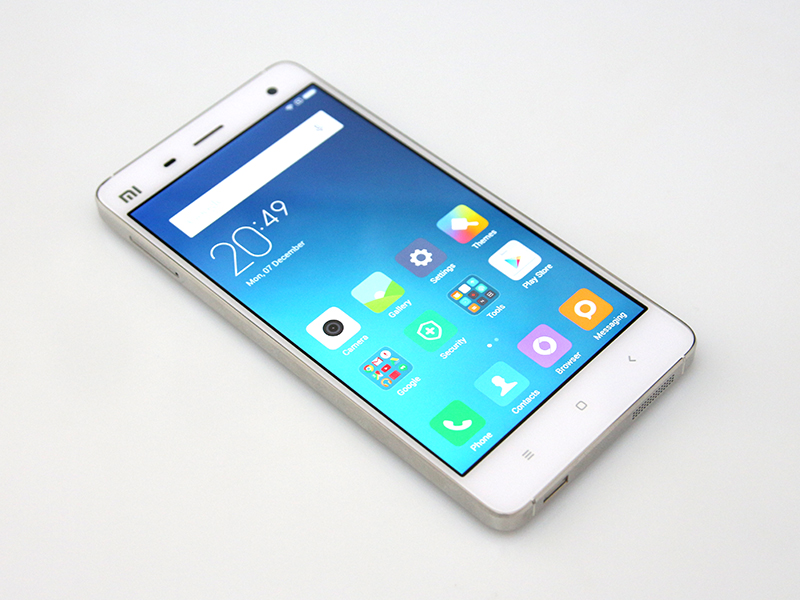
The same goes for audio quality. Xiaomi doesn’t mess around in the audio department, so the earpiece and side-firing speaker are top notch. The phone also has a secondary noise-cancelling microphone on the back. Call quality is above average, along with earpiece loudness and clarity.

Both cameras on the Mi4 are based on Sony sensors, and by now you are probably familiar with the main camera sensor. The Sony IMX214 is used in hundreds of different phone designs, and it’s not the latest or most powerful sensor on the market.

The good news is that Xiaomi made the most out of it, with excellent f/1.8 optics. The fast aperture allows the camera to capture excellent images and deliver fast HDR performance.
We were not disappointed with the sample shots.

Indoor daylight shots were quite good, although a tad on the soft side. At night, sans flash, it's more of the same; good results with a bit too much softness on default settings.

The camera also supports a range of different modes, including manual controls, rapid fire HDR (10 shots per second), with hardware-based HDR preview. Users can choose between two very different HDR modes. The Pro mode is more or less a standard HDR implementation, while the other relies on different light balancing. The results are very different: the standard HDR mode boosts contrast and saturation, while the second one generates a much more realistic photo (note the haze in our sample shot).

As for HDR speed and ghosting, we can report that HDR is very fast and there's no ghosting in most situations, as our 100% crop illustrates.

The camera captures a lot of detail, despite the soft feel. Unfortunately, our model wasn't willing to pose, but you get the picture.

The MIUI camera app is feature-packed and intuitive, and it’s fast as hell. The Mi4 can even capture 4K video, although this is more or less pointless on a 16GB device.
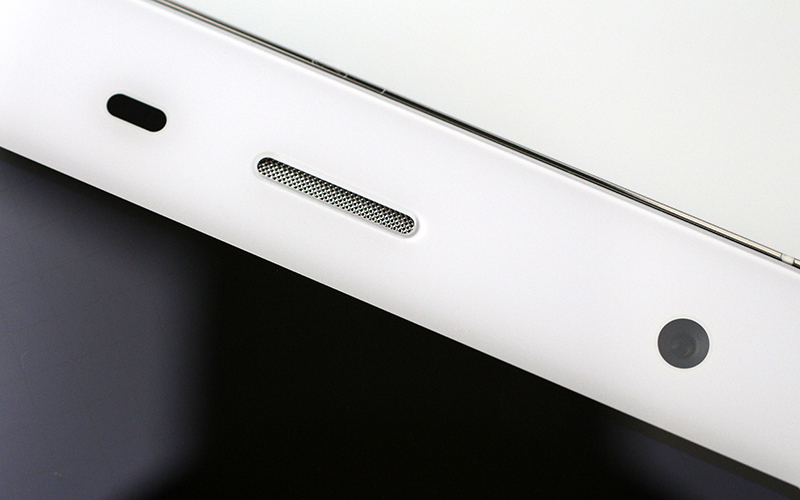
The front facing camera is an 8-megapixel affair. Like the main camera, it features high-speed f/1.8 optics and does not disappoint. It can deliver some great selfies, even in low-light situations.
While a glance at the spec sheet may lead some users to conclude that the Mi4 camera is past its prime, this isn’t exactly true. A lot of cheap phones ship with IMX214-based cameras, but in most cases they feature cheap optics, so they don’t come close to the Mi4 in terms of image quality.
OS, UI, Everyday Use
MIUI 7 was launched a couple of months ago, and like we pointed out in the spec section, the Mi4 runs Android 4.4.4 under it. While we would have liked to see Android 5.x, this isn’t a big deal thanks to MIUI 7. Basically, most people wouldn’t be able to tell the difference between a Mi4 running KitKat and a Mi4c running Lollipop. In addition, the Mi4 should get a few more software updates and move to Android 6.0 sometime next year.
MIUI 7 is the latest incarnation of Xiaomi’s Android implementation, and it’s one of the best non-stock Android experiences out there. MIUI 7 also looks a bit different than its predecessors, because Xiaomi has finally dropped the last skeuomorphic elements in its design. MIUI 7 looks flatter, more modern, and a tad more responsive than MIUI 6 and 5.
For all its eye candy and useful features, MIUI is not perfect. For example, you still can interact with lock screen notifications. You can even expand email notifications once you unlock the phone; you have to open them instead.
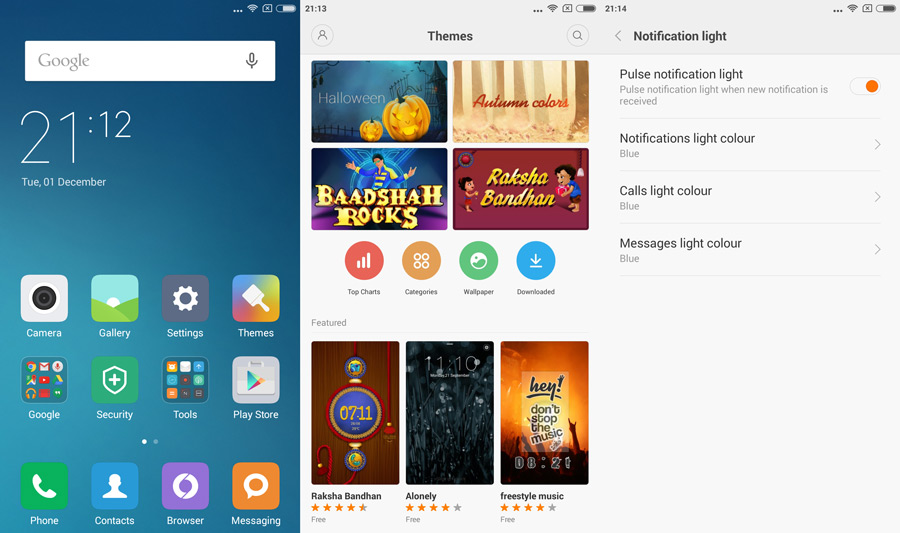
On the other hand, MIUI offers excellent customisation options, a lot of clever shortcuts and features (including great on-device search), and at the end of the day, it just looks good.
MIUI is more than a skin, because it includes a lot of custom apps, like the Xiaomi security suite, badass camera app, and a good music player. It’s nowhere near stock Android, so if you are new to it, MIUI may take some time getting used to. However, once you do get used to it, chances are you’ll love it.
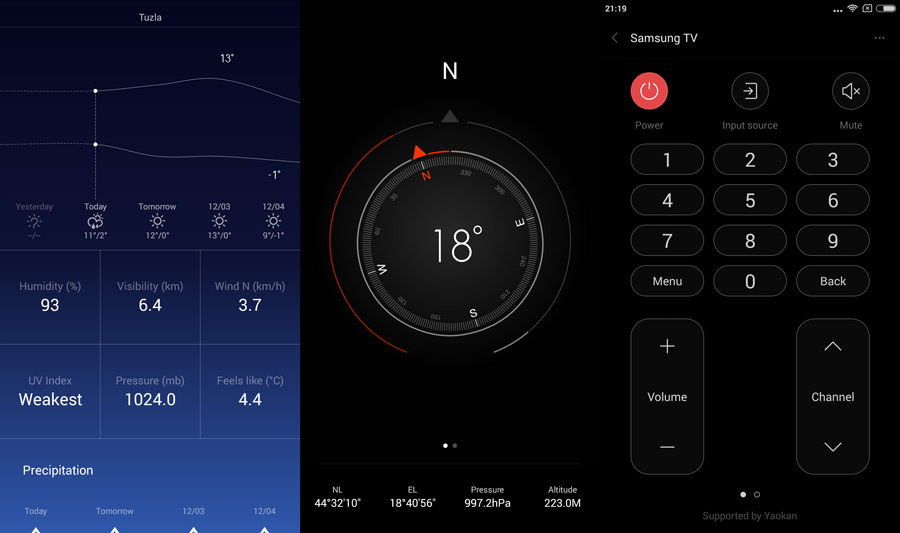
We already mentioned the great sensor suite which enables users to run all sorts of niche apps that might not work on a lot of devices.
So what’s the Mi4 like as a daily driver?
Well, apart from the fact that it has no 4G support, it’s just like a regular Mi4, which is good news. The phone is very responsive and the Snapdragon 801 has no trouble keeping up with anything you throw at it. Don’t forget you also have 3GB of RAM and fast eMMC 5.0 storage to play around with.
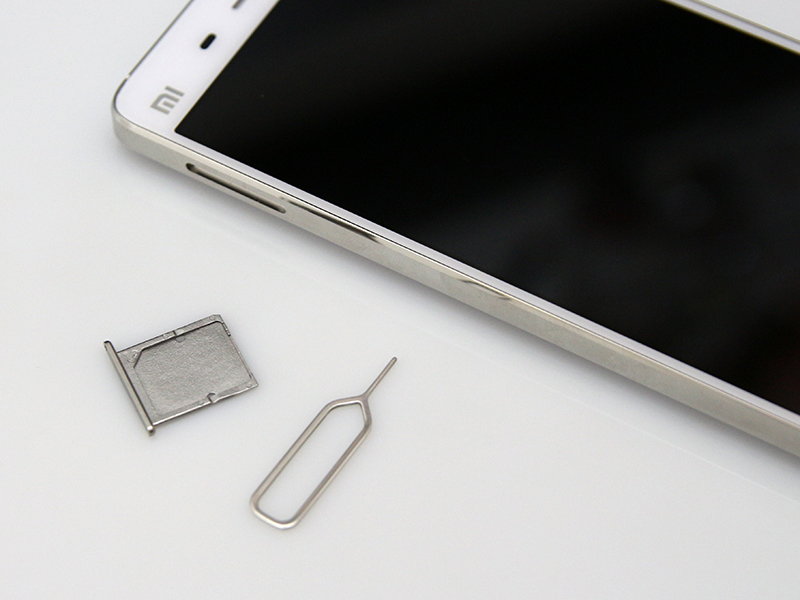
Performance will not be an issue, but cramped internal storage will. The Overseas Edition (or Mi4W) is currently only available with 16GB of non-expandable storage, which gives the user about 12.5GB of available storage. That’s really not a lot in this day and age. This is perhaps the phone’s biggest drawback, but it really depends on the user. A lot of people still get by with 16GB, but youths who like to install loads of apps and carry around a vast music collection will have to look elsewhere.
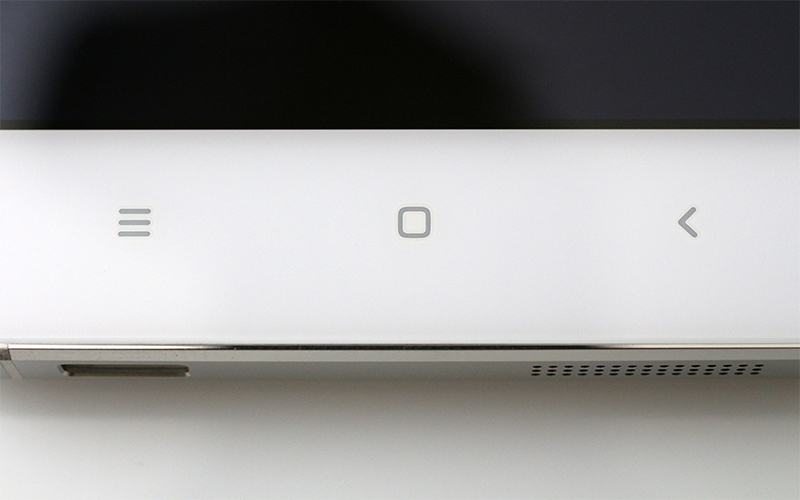
Ergonomics are great, and at under 140mm tall, the phone is relatively compact for its screen size. Granted, it’s not as thin as some flagships, but it’s not too bad.

The brushed aluminium sides offer a fair amount of grip, but the glossy back can be an issue if you have sweaty hands. Good thing it’s removable, because you can customise your Mi4 with a range of rear covers (eg all sorts of wood covers are available).
Battery life is relatively good, as you’d expect from a 3080mAh unit. Of course, the powerful SoC and oversized Adreno 330 GPU can use up a lot of power, especially if you start gaming. This is a problem for all phones based on high-end processors, so we can’t hold it against the Mi4. In regular use, you are looking at anywhere between a day of heavy use to two days of moderate/light use.
We averaged a day and a half on 3G and WiFi, but there is a catch; this thing doesn’t have 4G support, so keep that in mind. Firing up the integrated 4G modem can use up a lot of juice, and if you check how big these things actually are, you will realise the GPUs on many smartphone SoCs are actually smaller than their on-die 4G modems. Lack of 4G support means you can’t bleed the battery as fast as you would on a 4G device, but you’ll have to live with lower data speeds.

Lastly, we checked GPS functionality and we have no complaints regarding speed or accuracy. Xiaomi’s decision to pack its flagships full of various sensors is also worth mentioning, especially if you’re an outdoors person and like to a barometer in your pocket.
Conclusion
The Xiaomi Mi4 Overseas Edition is a strange phone. It’s a 3G flagship in an era of 4G mainstream phones, so it’s clearly not a good choice for people who want to use the fastest possible mobile data standard.
This isn’t necessarily a bad thing, because 4G is simply not available in a lot of markets, and coverage is spotty even in countries that already have a 4G infrastructure. If you live in a country with no 4G, or in a remote location where you can only use 3G, the watered down Mi4 starts to make perfect sense.
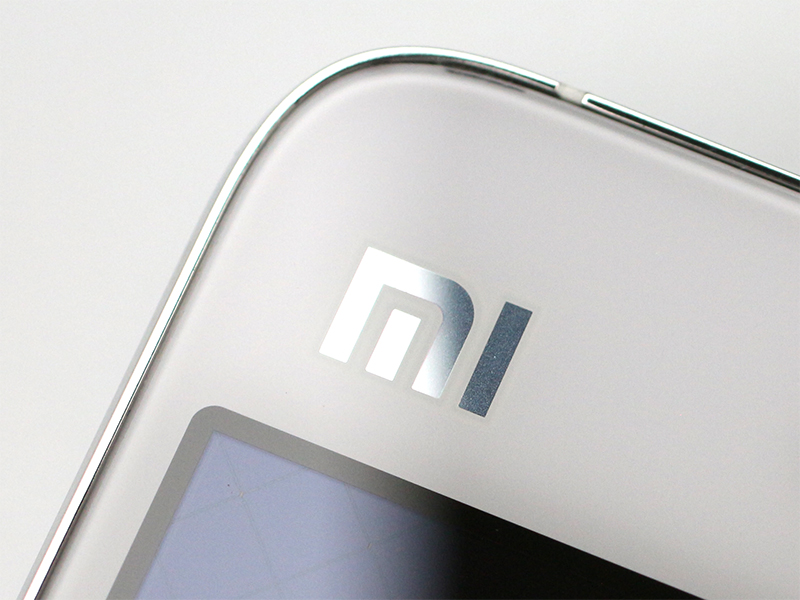
The Mi4 Overseas Edition sells for $227 via GearBest, but if you pounce over the next few weeks, you can use coupon GBMI4 to get it down to $205 (valid till January 15). Basically the Mi4W costs as much as a mid-range phone. It’s actually slightly cheaper than the Mi4c we had a chance to review a couple of months ago.
Apart from the lack of 4G support, there’s really not much to complain about. The biggest problem for most users will be lack of storage, because Xiaomi is only marketing the 16GB version at this time, and there is no microSD support. At the end of the day, you’re getting a flagship phone for peanuts, so we can see a lot of bargain hunters choosing the Mi4 Overseas over the Mi4c and competing mid-range models from other brands. It just makes sense.
Bottom line: If you don’t need 4G connectivity, the Xiaomi Mi4W offers exceptional value for money, and we can’t think of any other device that can come close in terms of sheer value.
Xiaomi Mi4W Overseas Edition Pros and Cons
Pros:
- Value for money
- Performance
- Excellent cameras
- Build quality
Cons:
- No 4G support
- Limited storage


